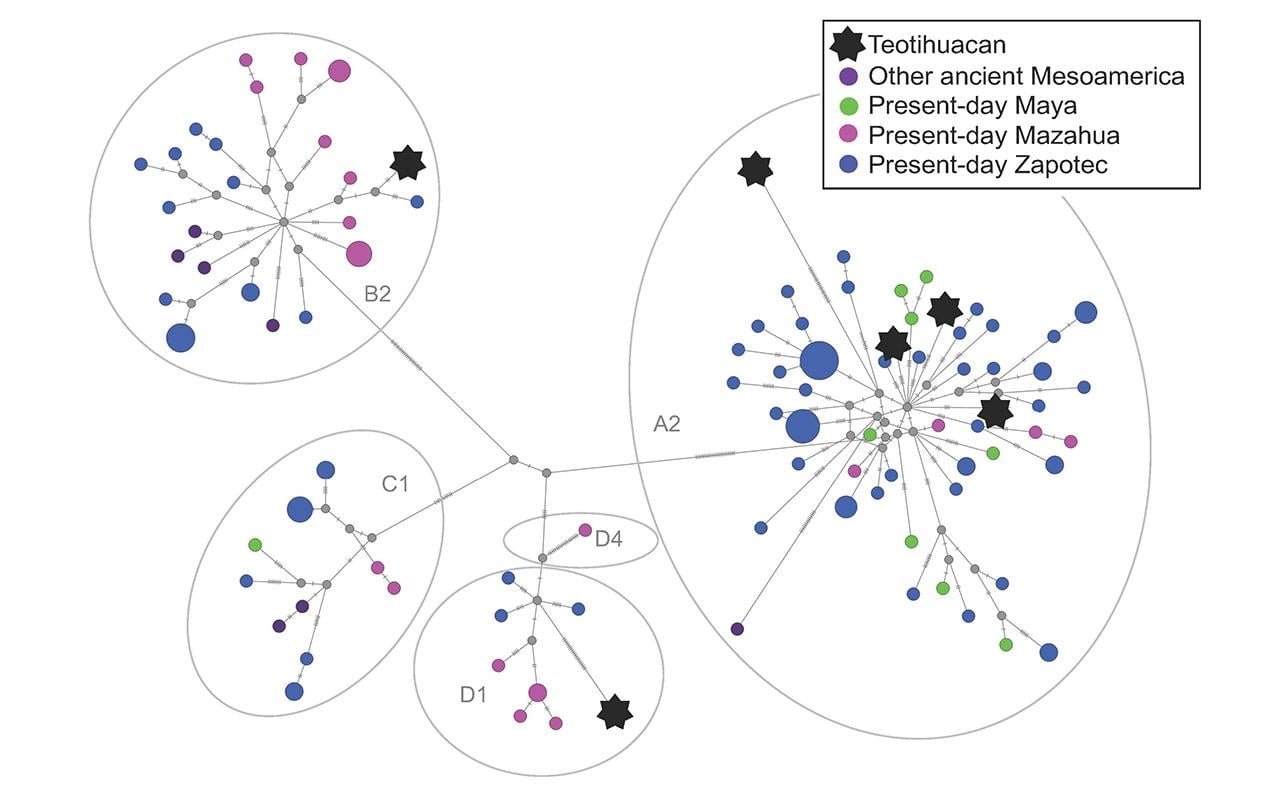Researchers led by Dr. Fuzuki Mizuno from the Toho University School of Medicine have unveiled the complete mitochondrial genome sequences of ancient individuals from Teotihuacan, the colossal Mesoamerican city known as the “birthplace of the gods.”

Teotihuacan, established in the second century BCE in the northeastern Basin of Mexico, reached its zenith in the fourth century CE, becoming one of the largest metropolitan centers in ancient Mesoamerica. The city’s growth, marked by distinctive phases, saw the construction of iconic structures such as the Pyramid of the Sun, the Pyramid of the Moon, the Avenue of the Dead, and the Ciudadela with the Temple of the Feathered Serpent Quetzalcoatl.
Related: Teotihuacan Virtual Tour
Utilizing advanced DNA sequencing techniques, the research team extracted mitochondrial DNA from recently excavated burials at Teotihuacan, overcoming challenges posed by poor DNA preservation due to soil and climate conditions. The samples belonged to haplogroups A2, B2, or D1, indicative of contemporary Native American lineages, with haplogroup A2 being the most prevalent.

Dr. Mizuno highlighted the significance of the detailed genomic information obtained and said: “The Teotihuacan people were found to be similar to the Centro-Mesoamerican cluster, one of the two population clusters proposed based on haplogroup frequencies among present Mesoamerican indigenous people.” This suggests a genetic affinity between Teotihuacan and the broader Mesoamerican region.
The study also conducted isotope analysis on the same samples to gain information about dietary patterns. The results revealed a high dependence on C4 plants, particularly maize, as the primary food source for the Teotihuacan individuals. This finding aligns with the outcomes of previous archaeological studies, emphasizing the crucial role of maize cultivation in shaping Mesoamerican civilizations.
Building on previous research proposing Centro-Mesoamerican and Pan-American population clusters, the study reaffirms Teotihuacan’s alignment with the Centro-Mesoamerican cluster. Prof. Kunihiko Kurosaki emphasized the need for further analysis on a larger scale to conclusively determine the population cluster to which Teotihuacan belongs.
This research contributes to a growing body of knowledge about ancient civilizations, showcasing the power of genetic analysis in unraveling the mysteries of Teotihuacan’s past. The cosmopolitan nature of the city, indicated by the genetic mixture of ancestral groups, suggests a dynamic history of migration and cultural exchange. Additionally, the identification of familial relationships through mitochondrial DNA analysis provides insights into the social structure and importance of kinship in Teotihuacan society.
The study, published in the Annals of Human Biology, opens new avenues for understanding the complex dynamics of ancient societies and their reliance on agriculture, particularly the cultivation of maize, as a driving force behind the rise of civilization in Mesoamerica.
























